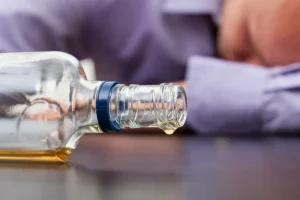
Treatment for alcoholism often involves a combination of therapy, medication, and support. If you think you might have an alcohol use disorder or if you are worried that your alcohol consumption has become problematic, it is important to talk to your doctor to discuss your treatment options. Today, we know that the symptoms of alcoholism can vary from one person to the next. Because the condition is progressive, these symptoms may increase over time in terms of the number of symptoms, their severity, and their impact. While there’s no specific blood test that can diagnose an alcohol use disorder, certain lab results can point to chronicalcohol abuse and possible alcohol addiction. Symptoms of dependence include becoming tolerant to some ofalcohol’s effects and experiencing withdrawal symptoms when alcohol is not consumed.
More on Substance Abuse and Addiction
As alcohol dries the skin, our natural defence against pathogens, this can also lead to repeated skin infections. This is called ‘alcohol flush reaction’ and it happens when your body is unable to fully digest all the alcohol you’ve consumed. This means that the toxins in alcohol, https://ecosoberhouse.com/ including acetaldehyde, can build up in your body. In response, blood vessels in your face dilate – causing redness. In the long-term, these vessels can over-dilate, leading to spider veins on the skin. A healthcare professional may also be able to recommend resources and support.

Patient Care Network

We publish material that is researched, cited, edited and reviewed by licensed medical professionals. The information we provide is not intended to be a substitute for professional medical advice, diagnosis or treatment. It should not be used in place of the advice of your physician or other qualified healthcare providers. The most destructive form of alcoholism is chronic alcoholism, an emotionally, socially and physically devastating disease. Alcoholism emerges from alcohol abuse, when there’s a pattern of drinking despite negative consequences. Alcoholism and alcohol abuse are both categorized as alcohol use disorders—affecting people of all ages and stages of life.
Risk Factors
Treating the alcohol use disorder, along with the health problems caused by chronic, heavy drinking, may be possible. The first step will likely be a medically supervised detox, which will help rid your body of toxins and manage the symptoms of withdrawal. Consistently drinking over a period of time leads you to develop a tolerance to alcohol. If you suddenly stop drinking, this can lead to a number of uncomfortable alcohol withdrawal symptoms. It often drives people with alcoholism to keep drinking in order to limit these symptoms.

- While intoxication doesn’t necessarily indicate the individual has a problem with alcohol, recurrent intoxication may signify alcohol misuse—or addiction.
- Other ways to get help include talking with a mental health professional or seeking help from a support group such as Alcoholics Anonymous or a similar type of self-help group.
- Drinking a lot on a single occasion slows your body’s ability to ward off infections–even up to 24 hours after getting drunk.
- Everyday Health follows strict sourcing guidelines to ensure the accuracy of its content, outlined in our editorial policy.
Consider talking with a professional about your options to reduce the amount of alcohol you consume safely and avoid serious side effects. Drinking at a young age increases the chance of alcohol use disorder in some people. Alcoholism was identified in 1956 as an illness by the American Medical Association (AMA). It’s a disease—an altering of the brain that controls a person’s motivation and ability to make healthy choices. Once it takes hold, it can be hard to shake loose—without the right help.
Heavy drinking in this population is five or more drinks in one day or 15 or more drinks in a week. People assigned female at birth (AFAB) physical characteristics of alcoholics should limit drinking to one drink a day. Heavy drinking in this population is four or more drinks a day or eight drinks a week.
Spending lots of time drinking or dealing with its effects

